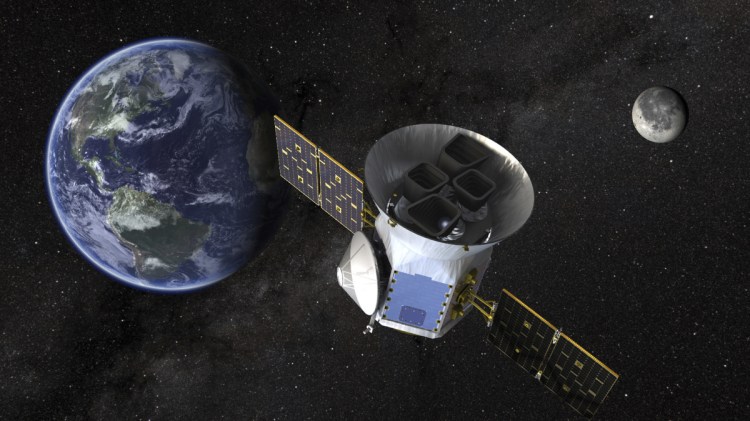CAPE CANAVERAL, Fla. — Look up at the sky tonight. Every star you see – plus hundreds of thousands, even millions more – will come under the intense stare of NASA’s newest planet hunter.
Due to lift off early next week, the Tess spacecraft will prowl for planets around the closest, brightest stars. These newfound worlds eventually will become prime targets for future telescopes looking to tease out any signs of life.
It will be the most extensive survey of its kind from orbit, with Tess, a galactic scout, combing the neighborhood as never before.
“We’re going to look at every single one of those stars,” said the mission’s chief scientist, George Ricker of the Massachusetts Institute of Technology.
Scientists expect Tess to find thousands of exoplanets – the term for planets outside our solar system.
“All astronomers for centuries to come are really going to focus on these objects,” Ricker said. “This is really a mission for the ages.”
NASA’s astrophysics director, Paul Hertz, said missions like Tess will help answer whether we’re alone – or just lucky enough to have “the best prime real estate in the galaxy.”
Tess – short for Transiting Exoplanet Survey Satellite – is the heir apparent to the wildly successful Kepler Space Telescope, the pioneer of planetary census. Kepler’s fuel tank is running precariously low after nine years of flight, and NASA expects it to shut down within several months.
Still on the lookout from on high, Kepler alone has discovered more than 2,600 confirmed exoplanets. Even more candidates await confirmation.
The exoplanet count, from all observatories in space and on Earth over the past couple of decades, stands at more than 3,700 confirmed with 4,500 on the strong contender list.
About 50 are believed to potentially habitable. They have the right size and the right orbit of their star to support surface water and, at least theoretically, to support life.
Most of the Kepler-identified planets are so far away that it would take monster-size telescopes to examine them more. So astronomers want to focus on stars that are vastly brighter and closer to home – close enough for NASA’s upcoming James Webb Space Telescope to scrutinize the atmospheres of planets lurking in their sun’s shadows. Powerful ground telescopes also will join in the detailed observations, as well as enormous observatories still on the drawing board.
MIT’s Sara Seager, an astrophysicist who has dedicated her life to finding another Earth, imagines water worlds waiting to be explored. Perhaps hot super Earths with lakes of liquid lava. Maybe even rocky or icy planets with thin atmospheres reminiscent of Earth.
Copy the Story LinkSend questions/comments to the editors.



Success. Please wait for the page to reload. If the page does not reload within 5 seconds, please refresh the page.
Enter your email and password to access comments.
Hi, to comment on stories you must . This profile is in addition to your subscription and website login.
Already have a commenting profile? .
Invalid username/password.
Please check your email to confirm and complete your registration.
Only subscribers are eligible to post comments. Please subscribe or login first for digital access. Here’s why.
Use the form below to reset your password. When you've submitted your account email, we will send an email with a reset code.